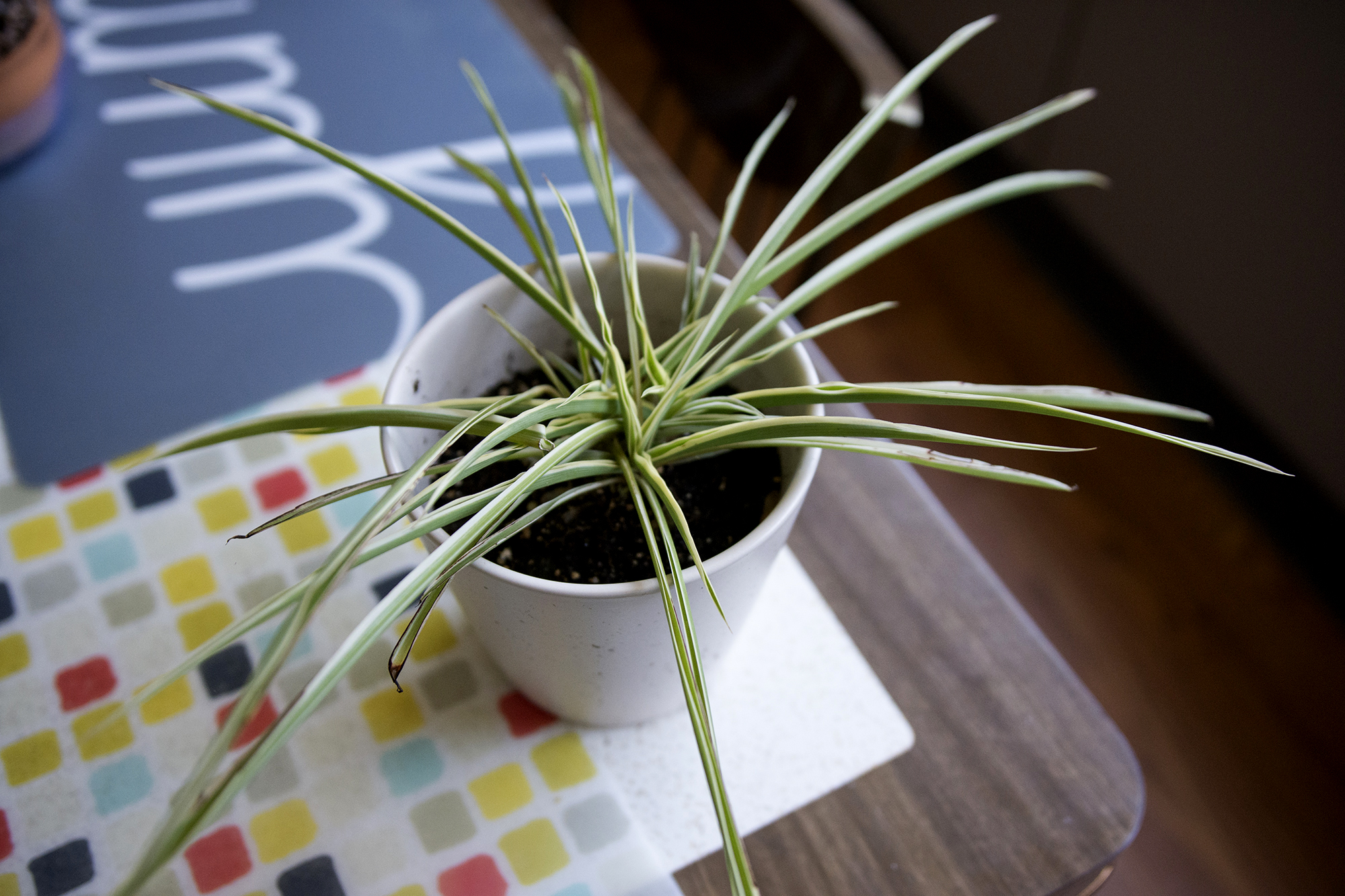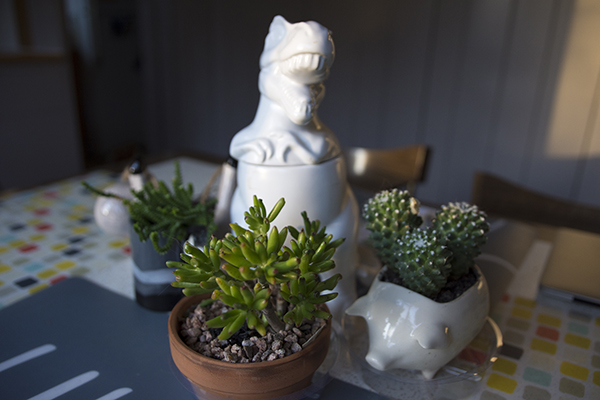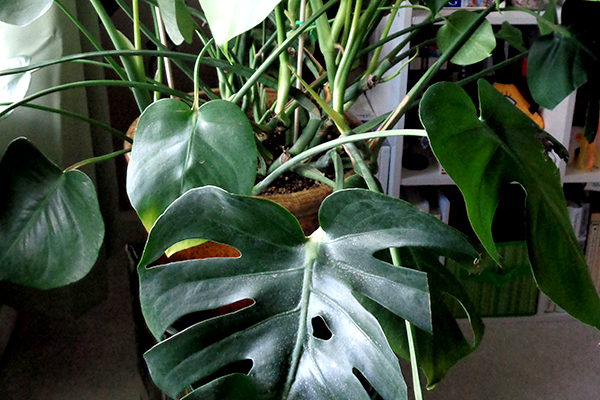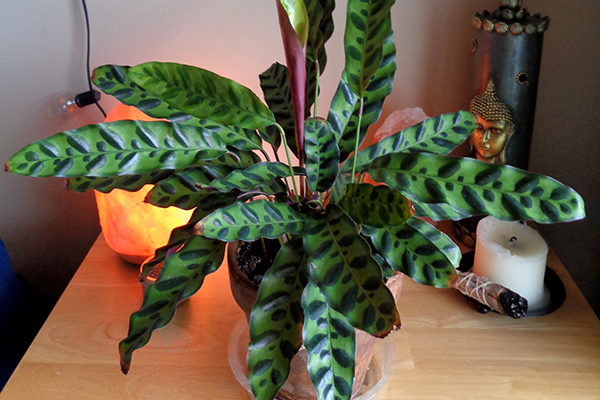Summer is a perfect time to expand your indoor garden, whether you’re at home or on campus. Scientifically, houseplants have been proven to improve your health, from purifying the air to purifying the mind — and they’re a perfect addition to any room décor.
iSEE Communications Intern Taylor Jennings offers five houseplants you can add to any living space this summer that are sure to brighten your days!
- Spider Plant
The spider plant, a grass variety, is one of the hardiest plants out there. It can handle just about anything from over- to under- watering, too much sunlight or not enough, and anything else you might happen to throw at it. All the while, its full and dark green leaves with a white stripe down the middle add a burst of color to any room.
Make sure to place this plant in bright, indirect light. Depending on environment, plan on watering your plant about once a week. If you notice that the soil is getting dry, don’t be afraid to drench it. Before the next watering, allow for the soil to dry out — spider plants really enjoy this treatment.
Look out for any browning of the tips of this plant; it can often mean they’re receiving irregular watering (either too much or not enough). But don’t worry: This is quite normal. It takes a lot to damage these plants.
Spider plants are also air purifiers. It would only take 15 spider plants to purify an average-sized house, making them perfect for an apartment or bedroom!

- Succulents & Cacti
Succulents and cacti are perfect additions to an indoor garden. They come in a variety of styles and colors that add diversity to your standard cast of houseplants.
Succulents need at least half a day to a full day of sunlight. But beware of afternoon sun — especially if you decide to place your succulents outside this summer. They can easily get sunburned, which usually manifests with the plant turning purple (a sign of stress). More sun means more color, but you must acclimate succulents to any new environment first.
Succulents need extremely coarse, well-draining soil. If you use potting mix, your typical houseplant soil, make sure the plants are completely dried out between watering. Otherwise, they can become overwatered and sustain root rot. Typically, anywhere from one to two weeks in between watering is necessary.
Placing succulents and cacti in a southern-facing window, left to their own devices, is the best way to go with these houseplants.

- Split-Leaf Philodendron (Monstera deliciosa)
These tropical beauties are the up-and-coming stars of indoor gardening. With their huge, heart-shaped leaves and massive growth, they make for a perfect addition to a home garden for anyone wishing to live in a rainforest.
These plants love bright, indirect sunlight, in temperatures around 70 to 75 degrees — think rainforest conditions. It’s hard to overwater these plants since they’re made for very wet conditions like the tropics of Central America, but make sure to allow for the soil to dry between watering. Check to see if the first 2 inches of soil are dry, and if so, water the plant completely.
These plants also love to be misted. Using a spray bottle, spritz the leaves once or twice a day to really make them happy.
Unfortunately, these plants are not considered cat safe. So, if you have a fuzzy family member, reconsider adding this variety to your garden.

- Rattlesnake Plants
These plants are not like your typical houseplant: They move. You will find that throughout the day, the plant’s leaves will open in the morning and close in the evening (responding to sunlight). This little show will make them as lively as they are beautiful in your indoor garden.
Rattlesnake Plants do great in low to medium light. Direct light can often lead to the scorching of the leaves, leaving them brown and discolored.
Keep the soil of this plant moist but not wet. Oversaturation will lead to yellowing of the leaves. During the summer months, you will have to water the plant more frequently to keep the soil damp. Extended periods of not watering, or irregular watering, will result in the browning of the leaf tips.

- Peperomia
These plants are some of the most indestructible houseplants you can have. They are compact enough that you can place them on a desk or shelf to add some life and color to any place in your house or apartment.
Peperomias thrive in low to medium light conditions, far away from direct sunlight. They even do well under fluorescent light! They can handle long stretches in between watering, perfect for the new gardener. Allow the soil to dry out as deep as 5 inches in between watering, and water completely in well-draining soil when you do.
If your plant has a mottled leaf (it contains a variety of colors such as white and green), make sure it is placed in more sunlight. It won’t damage the plant not to be in this location, but the leaves will start to lose their coloring if they don’t receive enough sun.

This list of easy-to-care-for houseplants only scratches the surface of available plants available for a soothing, air-cleaning indoor garden. You can always find more information about your new plant friend online or at your local plant nursery.
Check back in toward the end of the summer for more tips and tricks on how to move your indoor garden back to campus come the fall.
Happy gardening!
— Photos by Taylor Jennings and Jordan Goebig